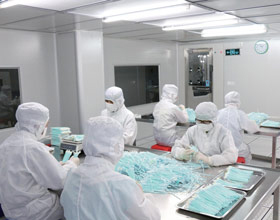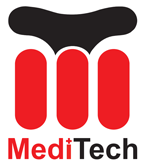
クリーンスワブ 小さくて取るに足らないツールのように見えるかもしれません, しかし、それらは高品質の製造プロセスを保証する上で重要な役割を果たします. これらの特殊な綿棒は、クリーンルーム環境の厳しい要件を満たすように設計されています。, ほんのわずかな汚染でも深刻な結果をもたらす可能性がある場所.
クリーンルームは、製薬などの産業で使用される管理された環境です。, エレクトロニクス, そしてバイオテクノロジー. 浮遊粒子を最小限に抑えるように設計されています, ほこり, 生産プロセスに悪影響を与える可能性のあるその他の汚染物質. 製品の欠陥を防ぐためには清潔な状態を維持することが重要です, 機器の故障, 費用のかかるやり直し作業.
クリーンルームにおける主な汚染源の 1 つは人間との接触です。. 私たちの体は死んだ皮膚細胞を自然に取り除きます, 髪, と油, 微生物や粒子が含まれる可能性がある. これらの粒子が製造プロセスに入ると, 製品の故障につながったり、敏感な機器の性能に影響を与えたりする可能性があります。.
ここでクリーンルーム用綿棒が活躍します. それらは、残留物を置き去りにすることなく、繊細な表面から汚染物質を効果的に除去するように特別に設計されています. これらのスワブで使用される材料は、クリーンルーム環境に追加の汚染物質を導入しないように慎重に選択されます.
クリーンルームのスワブは、さまざまな材料で利用できます, ポリエステルなどの, フォーム, またはマイクロファイバー. 各素材には、さまざまなクリーニングタスクに適したユニークなプロパティがあります. 例えば, フォームスワブは、液体を吸収するのに最適です, ポリエステルスワブは表面から粒子を除去するのに理想的です.
クリーンルームスワブのデザインもその効果に貢献しています. それらは通常、繊維の脱落を防ぐために、低リントまたは非linting構造で製造されています. さらに, スワブは、一貫した形状とサイズを持つように設計されています, 均一なクリーニングを確保し、残留物を後にするリスクを軽減する.
クリーニング機能に加えて, クリーンルームスワブは、品質管理にも役立ちます. 重要な表面を定期的に塗りつぶすことで、メーカーは清潔さのレベルを監視し、汚染の潜在的な原因を特定できます. これらの問題を迅速に特定して対処することにより, 製造業者は、費用のかかる生産の遅れや製品のリコールを防ぐことができます.
クリーンルーム環境で事業を展開している企業にとって、スワービング手順のための適切なプロトコルを確立することが重要です. これには、適切なスワブ材料の選択が含まれます, 表面洗浄のための推奨技術に従います, 使用済みのスワブを適切に廃棄します.
結論は, クリーンルームスワブは、高品質の製造プロセスに貢献する不可欠なツールです. 臨界表面から汚染物質を効果的に除去することにより, それらは製品の欠陥を防ぐのに役立ちます, 機器の故障, 費用のかかるやり直し作業. クリーンルームスワブの適切な利用, 厳しい清潔さのプロトコルとともに, 製造プロセスが品質と信頼性の最高水準を満たすことを保証する.
 クリーンルーム用フォームスワブ, ポリエステル綿棒, プリンタークリーニングキットメーカー – MediTech
クリーンルーム用フォームスワブ, ポリエステル綿棒, プリンタークリーニングキットメーカー – MediTech